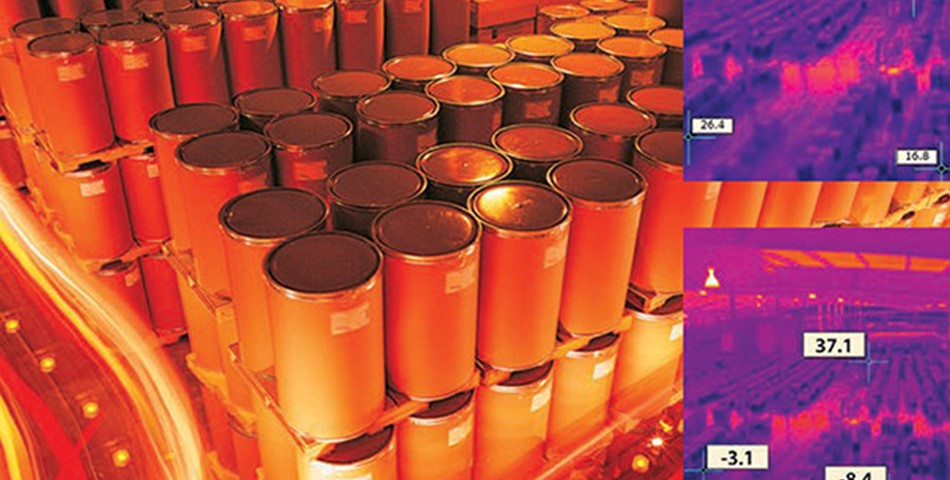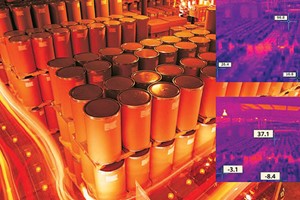If you own or manage a business, you know how devastating a fire can be. Not only do fires reduce profits by damaging property and equipment as well as increasing downtime, but they are a serious safety risk for you and your employees. And while not all fires are entirely preventable, there are many steps you can take to increase your chances of preventing fires and reacting quickly when one does occur.
Fire detection systems serve a simple purpose to spot fires early enough to allow for safe evacuation of personnel and, if possible, for a quick response to put the fire out. With the right fire detection system, the human and equipment costs due to damage can be significantly reduced. Electronic detection systems most commonly work with alarms to immediately notify those in the vicinity or connected to a monitoring system. This provides warning of a fire to building occupants and can provide information to emergency responders on the location of the fire, speeding the process to control the fire.
A fire protection system aims to protect a building’s occupants while minimizing the damage associated with fire. Overall, the goal is to provide the widest possible window for a safe evacuation and reduced damage to equipment, which will lessen downtime and potential repair costs.
Other forms of fire detection do not require power, like pneumatic detection tubing. The tubing is installed inside and throughout areas that have a higher risk of fire. When a fire is present, the tubing will burst open at the point of contact, indicating a fire, and discharge the fire suppression agent.
Teledyne FLIR’s, thermal imaging cameras help to prevent fires by detecting hot spots before they ignite. The automated, non-contact temperature measuring devices are ubiquitous in a host of industrial plants across the globe. Installing FLIR thermal imaging cameras to measure temperature changes automatically can help to avoid fire related disasters, creating a safer environment for both personnel and the local community whilst complying with insurance oversight. The FLIR A and A70 smart sensor cameras are widely used at fuel depots and provide, quick, precise and reliable early fire detection in all light conditions.
Warehouses are also highly likely to catch fire, even though a vast majority are fitted with fire alarms and firefighting systems. Teledyne FLIR’s thermal imaging cameras identify hot spots and provide operators with an early warning indication to evade full-on conflagration before a fire ignites. The compact and economical FLIR AX8 camera, with streaming video output, broadcasts data to a control room monitor that in turn sends personnel to the precise location of the hot spot. Operators can alter pre-set temperature alarms to compensate for temporary changes, for example: the presence of a worker, or a fork-lift truck.
Another application example is the storage of flammable materials such as coal, wood chips and fertilisers, which face the risk of spontaneous combustion. In this case, a thermal imaging camera offers continuous, around-the-clock, remote temperature monitoring of these products when they are in a pile or being moved on a conveyor belt. The rugged and reliable FLIR FH-Series R multispectral fixed camera provides the perfect solution. The 4K visible imaging of the FH-Series R offers users quick hot spot verification and transmits images to an operator via a connected video management system (VMS) for instant assessment and response. The VMS can operate as part of a complete Teledyne FLIR or in combination with third-party solutions.
Bunker waste, like ‘pile’ applications, can be flammable when stored; self-combustion, heat development caused by pressure, methane gas accumulations and spontaneous chemical reactions between disposals can all potentially start a fire. Industrial locations such as municipal waste incinerators, foundries and cement plants can often opt to safeguard their assets and personnel using FLIR technology. Operators can network solutions such as FLIR’s A50 and A70 cameras, to offer a scalable system with high spatial resolution and thermal sensitivity.
Remote firefighters have found FLIR’s thermal imaging cameras to be extremely useful. Identifying a hot spot is only the start of a fire prevention solution, this is followed by remediation, which can be difficult in remote monitoring situations. FLIR cameras and software do not just locate hot spots, they can also set off an automated firefighting response, such as activating a sprinkler system, shutting a system down, or soaking the hot spot with firefighting foam - all via the Internet. For this application, FLIR offers the A310 ex ATEX-approved thermal imaging camera mounted in a flame-proof enclosure, with an integrated controller with digital I/O channels and sensors for temperature, humidity and pressure.










